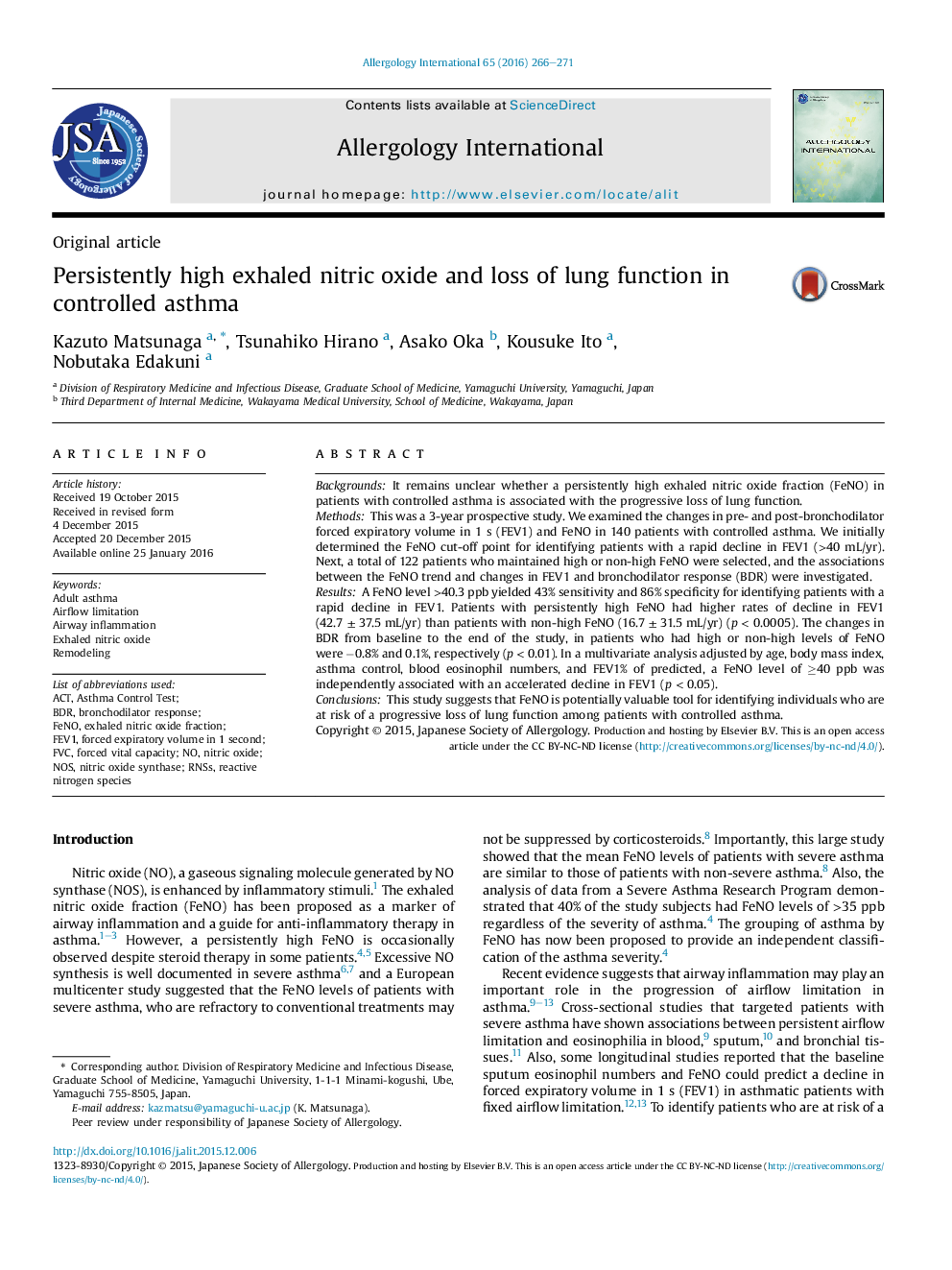| Article ID | Journal | Published Year | Pages | File Type |
|---|---|---|---|---|
| 3340449 | Allergology International | 2016 | 6 Pages |
BackgroundsIt remains unclear whether a persistently high exhaled nitric oxide fraction (FeNO) in patients with controlled asthma is associated with the progressive loss of lung function.MethodsThis was a 3-year prospective study. We examined the changes in pre- and post-bronchodilator forced expiratory volume in 1 s (FEV1) and FeNO in 140 patients with controlled asthma. We initially determined the FeNO cut-off point for identifying patients with a rapid decline in FEV1 (>40 mL/yr). Next, a total of 122 patients who maintained high or non-high FeNO were selected, and the associations between the FeNO trend and changes in FEV1 and bronchodilator response (BDR) were investigated.ResultsA FeNO level >40.3 ppb yielded 43% sensitivity and 86% specificity for identifying patients with a rapid decline in FEV1. Patients with persistently high FeNO had higher rates of decline in FEV1 (42.7 ± 37.5 mL/yr) than patients with non-high FeNO (16.7 ± 31.5 mL/yr) (p < 0.0005). The changes in BDR from baseline to the end of the study, in patients who had high or non-high levels of FeNO were −0.8% and 0.1%, respectively (p < 0.01). In a multivariate analysis adjusted by age, body mass index, asthma control, blood eosinophil numbers, and FEV1% of predicted, a FeNO level of ≥40 ppb was independently associated with an accelerated decline in FEV1 (p < 0.05).ConclusionsThis study suggests that FeNO is potentially valuable tool for identifying individuals who are at risk of a progressive loss of lung function among patients with controlled asthma.
Graphical abstractMean changes in post-bronchodilator FEV1 from baseline to each time point according to the FeNO levels in patients with well-controlled asthma at baseline.Figure optionsDownload full-size imageDownload as PowerPoint slide
